Last-Minute NYC Holiday Gift Guide 🎁
We’ve created a holiday gift guide with presents for the intrepid New Yorker that should arrive just in time—


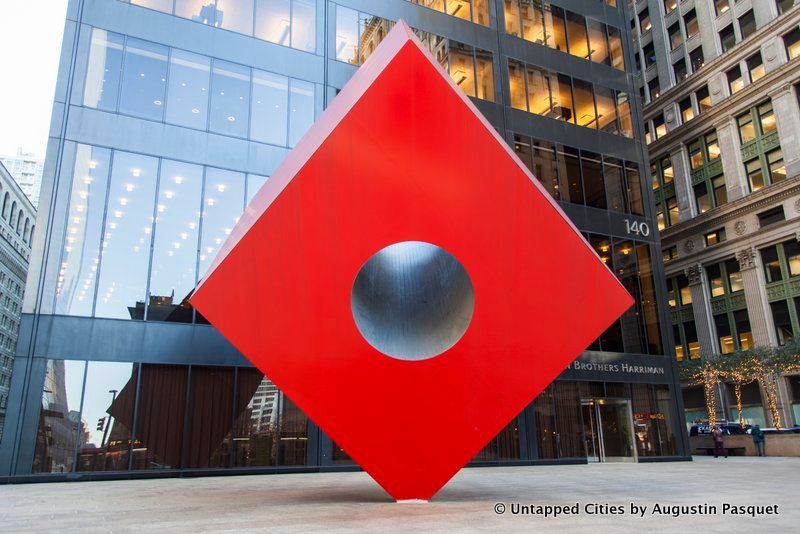
Sunday, February 19th was the 75th Anniversary of Executive Order 9066 which authorized the internment of Japanese and Japanese Americans on the West Coast. Artist Isamu Noguchi, a Japanese American whose father was Japanese and mother was American, was not subject to the executive order as a resident of New York City but he chose to self-intern himself with the agreement of the United States government in hopes to improve conditions at the Poston camp in Arizona. The Noguchi Museum currently has the exhibit “Self-Interned” exploring the impact of the internment on the artist.
But New York City is also full of Noguchi works in its public spaces. In honor of the artist and the anniversary of the executive order, here is a guide to Noguchi works you can find in New York City:

At 140 Broadway in Lower Manhattan, Isamu Noguchi’s Red Cube stands out prominently against the backdrop of the soaring Brown Brothers Harriman high rise. Noguchi’s initial submissions for the Public Works of Art Program were declined. Red Cube, however, was accepted and installed in 1968. Like many of Noguchi’s works, the sculpture playfully interacts with the surrounding urban fabric.
“The cube signifies chance, like the rolling of dice,” Noguchi explained. “If the ‘sun’ [in reference to another Noguchi’s piece, The Garden (Pyramid, Sun, and Cube), at Yale University] is primordial energy, the cube is that man-made pile of carbon blocks by which he had learned to stimulate nature’s processes. The cube on its point may be said to contain both earthly square and solar radiance.”
See more permanent outdoor art installations in NYC.

The sloped ground of the installation Sunken Garden is composed of 27,000 four-inch-quart granite stones from Vermont. In true Noguchi style, it has the feeling of a Zen garden, with its cobblestone pathways. In the summer, the garden acts as a fountain. It remains dry in the winter. Sunken Garden is located at 28 Liberty Street, formerly known as One Chase Manhattan Plaza.
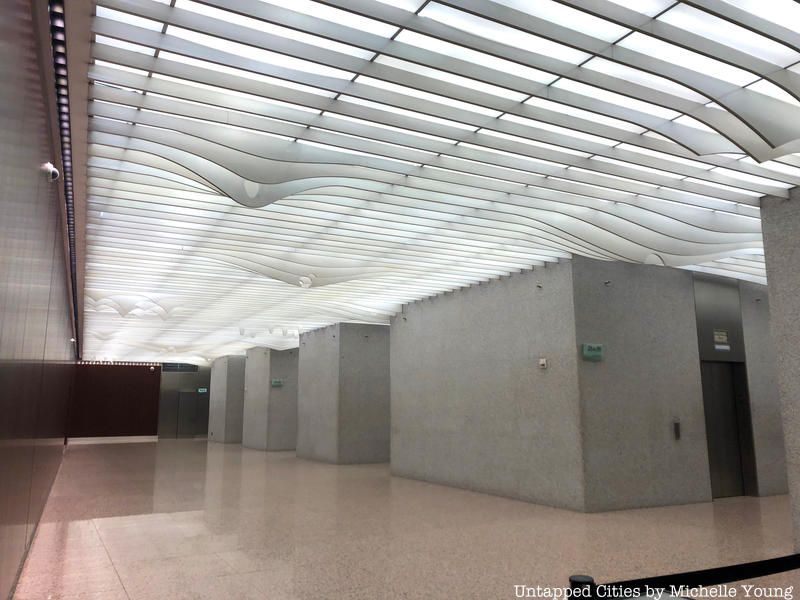 Landscape of Clouds
Landscape of Clouds
666 Fifth Ave features a landmarked lobby that was a collaboration between architect Robert Carson and Noguchi. The space features two of Noguchi’s masterworks, Landscape of the Cloud and Waterfall. Landscape of the Cloud was created on models of templates that were taken and executed directly on steel, painted and installed on-site. This piece transformed the lobby from a functional space to a more “inspiringly aesthetic one.”
Waterfall, the complementary work to the other, is made up of curved, cut stainless steel railings, each one different from the other, to create a kind of rippling wave effect. The two pieces add a sleek and modern aesthetic that contrasts all the noise and bustle of the city outside the building.
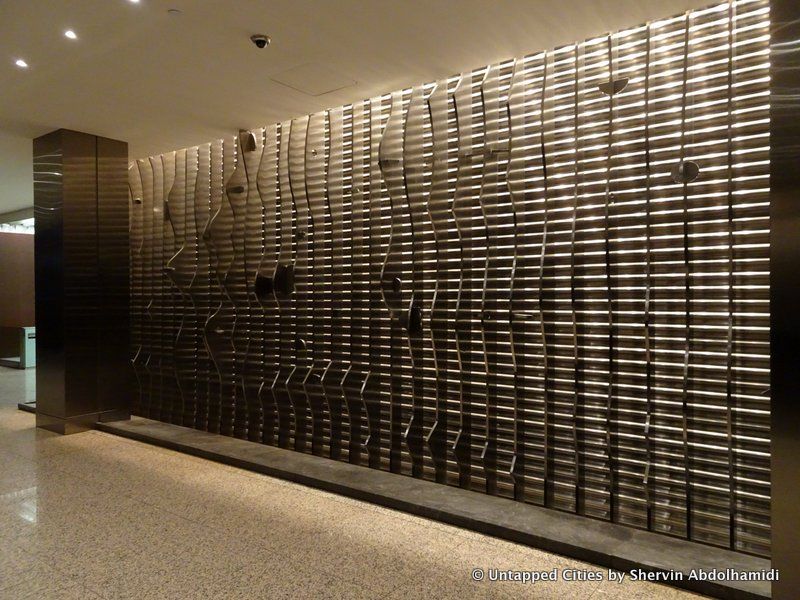
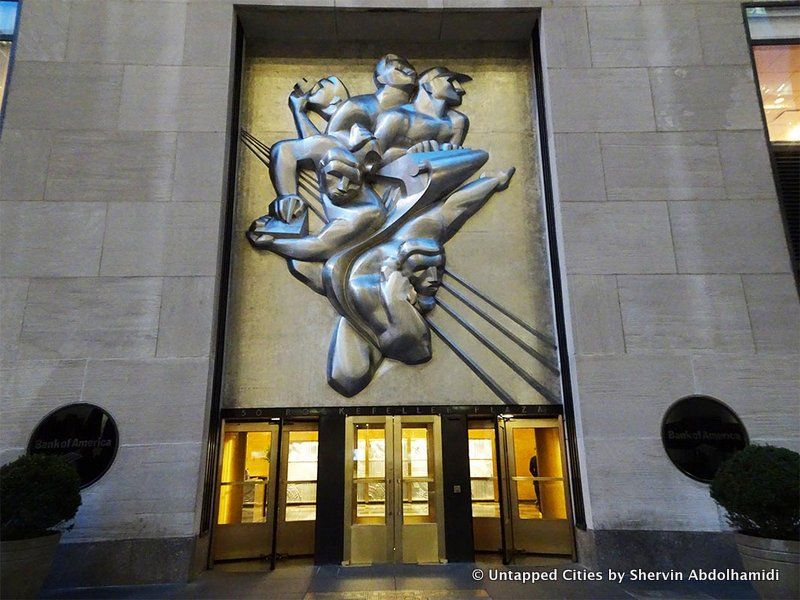
You know Rockefeller Center for its Art Deco architecture and its numerous pieces of famous art (like the Atlas and Prometheus sculptures, or the Diego Riviera mural that was removed due to controversy over its allegedly Communist imagery). But there’s also a Isamu Noguchi bas-relief sculpture on the facade of 50 Rockefeller Plaza, the Associated Press building. Noguchi entered a contest in 1938 to design this piece as he yearned to move from a purely figurative sculptor for the city’s social elite to a respected Modern artist in his own right.
Always one to buck the rules, Noguchi submitted a design in stainless steel instead of bronze, which was specified in the competition brief. Nonetheless, as the Rockefeller Center website states, “Noguchi’s design for the AP Building won out by far.” They also note that the News was “for many years, the largest and heaviest stainless steel sculpture in the world. It weighs over 10 tons and was cast in nine separate pieces before being welded into three huge sections for transport and installation.”
Today, the building is no longer the headquarters for the Associated Press and is used by Bank of America.

Just south of the Metropolitan Museum of Art in Central Park along Fifth Avenue is a basalt sculpture by Isamu Noguchi titled “Unidentified Object.” It was originally installed at the Doris C. Freedman Plaza at 59th Street by the Public Art Fund in 1979 and stood there for a month. The Public Art Fund wrote at the time it was the “first installation of a Noguchi in a public space in New York City,” likely meaning that his other earlier commissions had been for private buildings or privately owned public space in buildings. In 1981, it was then donated to the Metropolitan Museum of Art by the Isamu Noguchi Foundation.
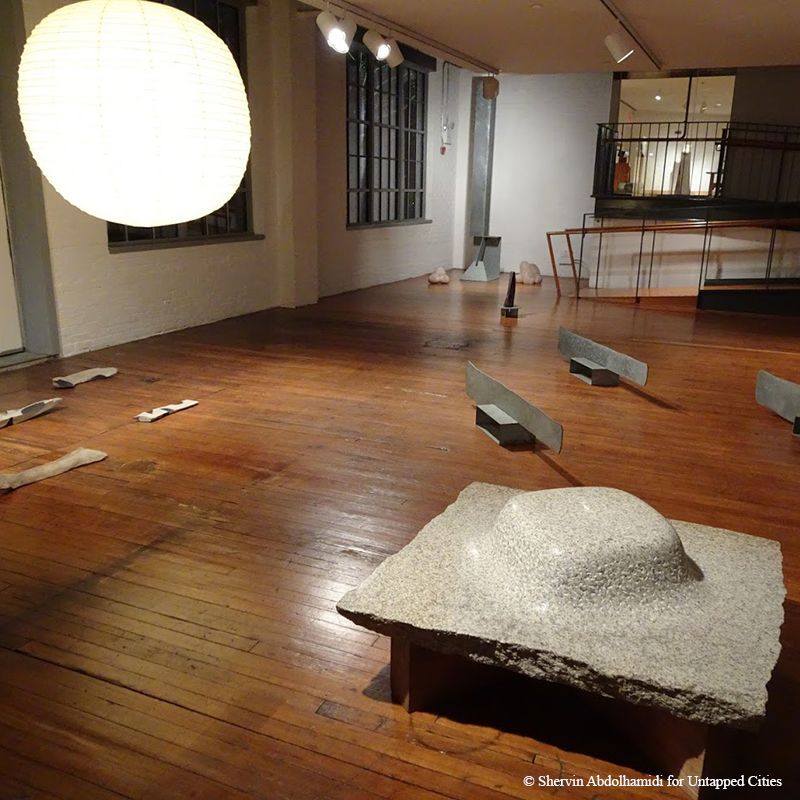
To get the full experience, head over to the Noguchi Museum in Long Island City, the first museum opened by a living artist of his own work. Noguchi purchased a site across from his studio and converted the former photogravure plant into his museum. Currently on display is the exhibit “Self-Interned” which documents the impact of Noguchi’s self-internment in the Poston internment camp during World War II. Don’t miss the sculpture garden, especially when the weather is warm.
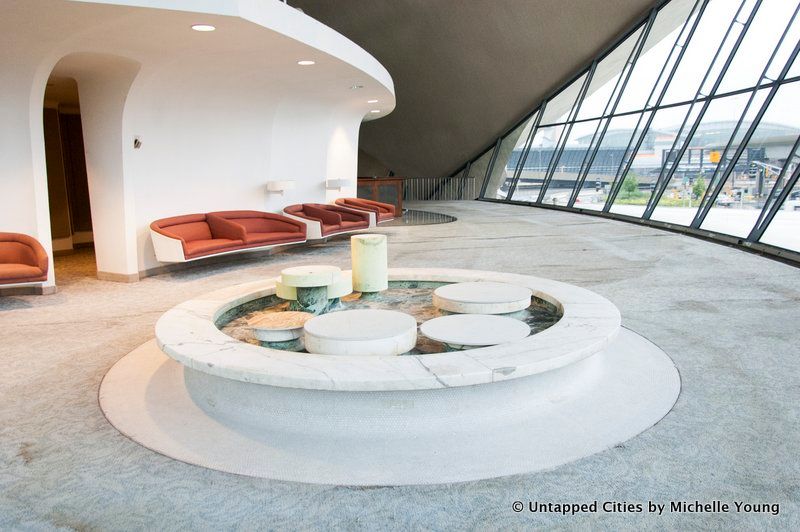
While the New York Times had previously noted that an Isamu Noguchi-designed fountain was located at JFK Airport is in the Eero Saarinen-designed TWA Flight Center, several sources, including the Noguchi Museum have debunked that theory.
Check out more photographs of the TWA Flight Center here.
Next, check out 20 permanent outdoor art installations in lower Manhattan.
Subscribe to our newsletter